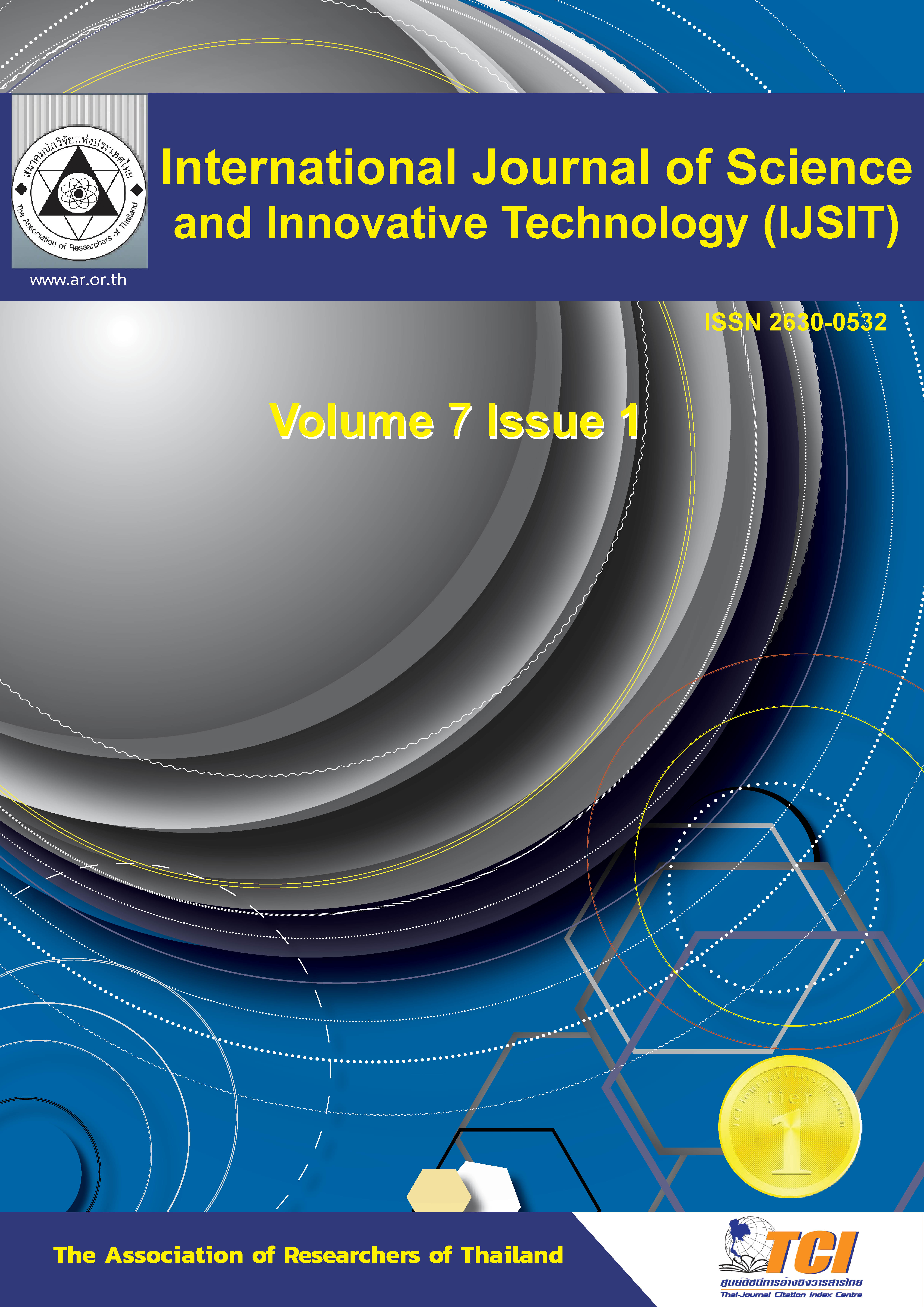Tour Guide Application for Tourist via Line Chatbot - In the case of Multicultural Tourism, Narathiwat Province -
Main Article Content
Abstract
The objectives of this research composed of 1) to develop a tour guide application and provide information via Line Chatbot of multicultural tourism for southern border cities. 2) To evaluate the efficiency of the application in practical use via Line Chatbot in the specific location at Narathiwat Province 3) To evaluate the satisfaction and effectiveness of the application by providing updated and corrected various information and all times auto responses between the application and user for better convenience and practical use. An automatic response in the form of an official account (LINE Official Account) can provide multicultural tourism updated information has been developed the application using the System Development Life Cycle (SDLC) which uses Artificial Intelligence (AI), Natural Language Processing (NLP) technology and the dialogflow program. The application is divided into 3 parts: 1) the user interface, 2) the message processing part from the user, and 3) the fulfillment engine. The user can select the information from the rich menu and a shortcut menu that displays additional requirement for the user needs. The tourism information included tourist attractions, restaurants, accommodations, and tourist routes, etc. From the satisfaction assessment of the application, a sample data group of 100 tourists has been used statistical analysis included mean and standard deviation. The results of the research found that 1) the efficiency of the application via Line Chatbot from the expert is at a very good level (𝑥̅= 4.37, S.D. = 0.38) and 2) the satisfaction of users is at a very good level (𝑥̅= 4.37, S.D. = 0.38) under this specific development.
Article Details

This work is licensed under a Creative Commons Attribution-NonCommercial-NoDerivatives 4.0 International License.
References
Bunchom S., 2006. Preliminary research. Bangkok: Suweeriyasarn.
Chakkrapan S., Phakapon S., Kacharin T., Phongkampanat K., 2021. System Development Information to Promote Tourism through the LINE Chatbot Application System in Phitsanulok Province. Journal of Accounting and Management Mahasarakham University, 13(1), 100-111.
Chakrin S., 2018. Online Marketing and Customer Service with Chatbots. Case study Using Chatfuel Interacts with Customers via Messenger. Sripatum Review Journal, 10(1), 71 - 87.
Chun H. C., Ho L. L., Wing K. L., Andrew K. L., 2018. Developing a Chatbot for College Student Programmed Advisement. School of Science and Technology the Open University of Hong Kong Hong Kong, Conference Proceedings: 2018 International Symposium on Educational Technology (ISET). pp. 52-56.
Dahiya M., 2017. A Tool of Conversation: Chatbot. International Journal of Computer Sciences and Engineering, 5(5), 158-161.
Google.2021.Dialogflow.https://cloud.google.com/dialogflow/docs, 15 November 2566.
Hill, J., Randolph F. W., & Farreras, I. G. 2015. Real Conversations with Artificial Intelligence A Comparison between Human–Human online Conversations and Human – Chatbot Conversations. Computers in Human Behavior, 49, 245-250.
Jirandorn B., 2017. Guidelines for Developing a Chatbot Prototype for Giving Advice on the Grant Request System. Research of the National Budget Nakhon Pathom Rajabhat University. The National Academic Conference 9th, Nakhon Pathom Rajabhat University, Nakhon Pathom Rajabhat University, Nakhon Pathom, pp. 1906–1913.
Jirawan T., 2023. Development of a Response and Educational Information Notification System for Faculty of Medical Science, Naresuan University with LINE chatbot. Academic Journal PKMT. 12 (2), 105 – 113.
Khwanradee H., 2017. Influence of Line Application in Communication in the Present Era. Journal of Arts of Management,1: 75–88.
Kornkan W., Sompop T., Sajimaj N., W., 2020. Application of Automatic Conversation Program for Displays Travel Information using the Electric Train System. The National Academic Conference, Chombueng Village Rajabhat 8th, Muban Chom Bueng Rajabhat University, Ratchaburi, pp. 1940–1950.
Miri H., Kyoung Jun L., 2018. Chatbot as a new business communication tool The Case of Naver TalkTalk. Business Communication Research and Practice, 1(1), pp. 41-45.
Monchai T., 2005. Statistics and Research Methods in Information Technology. Bangkok, King Mongkut's Institute of Technology North Bangkok.
Nongnuch K., Khanitha H., Worawit F., Dechawat R., Amit K., 2019. System Development on Support Online Marketing using Digital Content - A Case Study of the Naturally Dyed Woven Fabric Group at Ban Pangkom, Song Kwae District, Nan Province Sak Tong, Journal of Science and Technology. 6. 33–42.
Online manager. (15 November 2023). LINE reveals statistics of Thai people actively using it every 1st and 16th day of each month. Retrieved from https://mgronline.com/
Sumana B., Nattaporn P., Chiranut S., 2020. Development of Chatbot Application for Student Services Case Study: Division of Student Development Rajamangala University of Technology Suvarnabhumi, Research Journal Rajamangala University of Technology Thanyaburi, Vol 19 (2). 85-94.
Wasu B., Panith N., 2020. Development of the LINE BOT System for Graduate Schools. Presentation meeting Graduate research results no. 15. Graduate School Rangsit University, pp. 2406-2413.


